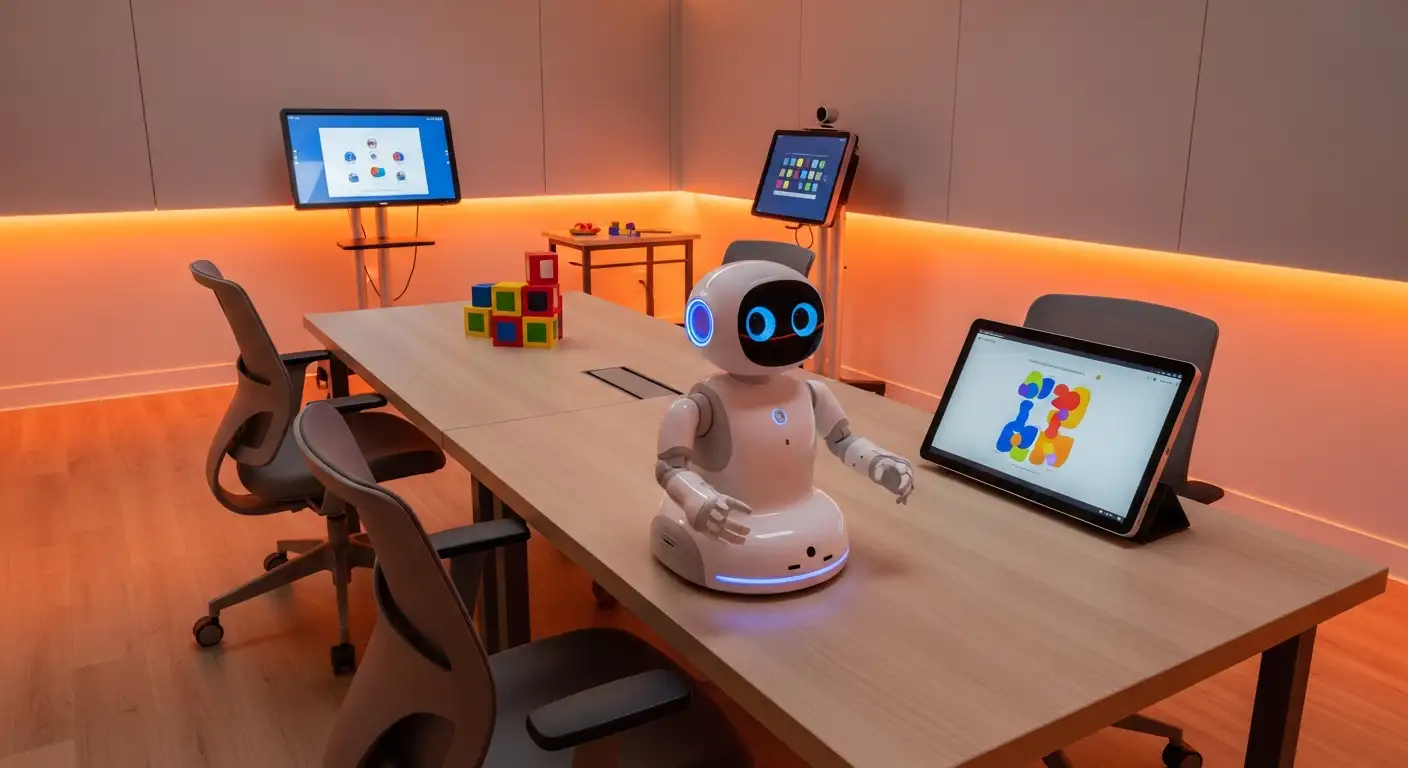How Robotic Innovations are Revolutionizing Education for Children with Autism
Introduction to Assistive Robotics in Autism Education
Assistive robotics is emerging as a transformative tool in the education and therapy of children with Autism Spectrum Disorder (ASD). By complementing traditional behavioral analysis therapies, socially assistive robots (SARs) offer engaging, adaptable, and effective supports that enhance learning, social interaction, and communication skills. This article explores how different types of assistive robots are integrated into autism education, highlighting real instances of their applications and benefits.
Key Facts on Autism Education and Intervention Techniques
- Toy robots like Cozmo are cost-effective tools that support social skill development in children with ASD.
- Interaction with humanoid robots such as Pepper and NAO enhances autonomy, communication, and social engagement.
- AI capabilities in robots allow for behavior analysis, early diagnosis, and personalized therapy planning.
- Behavioral analysis therapy, ABA, uses positive reinforcement, task analysis, and data tracking to improve social and adaptive skills.
- ABA therapy is individualized, intensive, and involves collaboration among professionals and families for effective outcomes.
- Progress in ABA is measured systematically through quantitative data and behavioral observations focusing on language, social skills, and independence.
- Common misconceptions include the belief that ABA is rigid or punitive, but it is actually personalized, positive, and collaborative.
- Humanoid robots can analyze behaviors with AI algorithms that classify verbal and non-verbal cues with high accuracy.
- Challenges in robot interaction include conversational rigidity, emphasizing the need for participatory design involving users and caregivers.
- Integration of AI with robotics supports adaptive, responsive interventions** that enhance accessibility and effectiveness in autism support.
1. Toy Robots Enhancing Social Skills Through Play and Interaction
Use of Commercial Toy Robots in Autism Education
Toy robots, such as the commercially available Cozmo, have emerged as effective tools in supporting autism education. These robots are designed to engage children with Autism Spectrum Disorder (ASD) in interactive play, providing a non-threatening and motivating environment where children can improve their social competencies. Healthcare professionals have successfully operated Cozmo autonomously during therapy sessions, demonstrating its feasibility and practicality in clinical contexts.
Improvement of Social Competencies Such as Gaze, Pointing, and Turn-Taking
Interaction with toy robots facilitates the learning and practice of fundamental social skills. Specifically, children with ASD showed significant improvement in non-verbal communication strategies including maintaining gaze, pointing, and turn-taking during play. These skills are essential components of social interaction and have been challenging areas for children with ASD in traditional therapy settings. The robot-assisted sessions therefore help children better understand and perform these behaviors, promoting natural social engagement.
Integration of Low-Cost Robots Like Cozmo into Therapy
One major advantage of toy robots like Cozmo is their low cost and user-friendliness. Unlike complex and expensive robotic systems, these commercially available robots can be easily incorporated into existing clinical practices without substantial additional resources. This accessibility makes them ideal for widespread use in therapeutic settings aiming to support social communication goals for children with ASD.
Practicality and Feasibility in Clinical Settings
Clinical trials utilizing Cozmo have shown that robot-assisted training is not only practical but also sustainable in therapy environments. Healthcare professionals confirmed that the robots could be operated effectively during sessions to provide consistent and engaging interactions with children. This supports the integration of robot-assisted interventions as a complement to traditional therapy approaches.
Positive Outcomes Compared to Standard Therapy
Studies comparing robot-assisted training with standard therapy alone have found that the inclusion of toy robots leads to superior outcomes in developing social skills. Particularly, children with ASD who participated in robot-based sessions demonstrated improved initiation of behavioral requests and social interactions. These promising results highlight the potential for robot-assisted therapy to enhance engagement and accelerate skill acquisition compared to conventional methods.
The use of toy robots like Cozmo presents a practical, effective, and cost-efficient approach to enriching autism therapy. By encouraging essential social behaviors through interactive play, these systems offer a valuable complement to existing treatments, helping children with ASD overcome communication challenges in a supportive and enjoyable way.
2. Humanoid Robots Supporting Autonomy, Communication, and Engagement in Autism Education
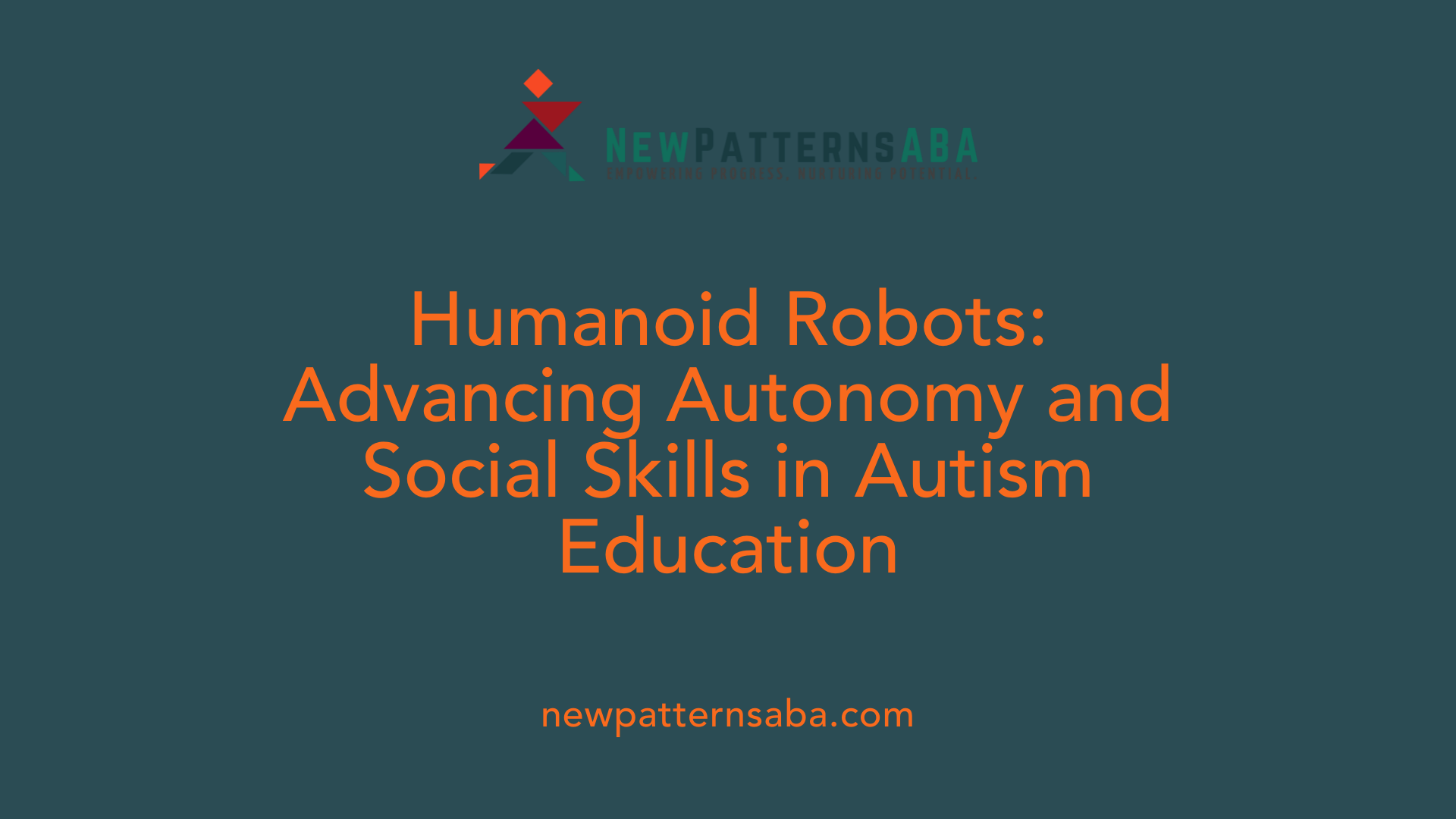
How Are Humanoid Robots Like Pepper and NAO Used in Autism Education?
Humanoid robots such as Pepper and NAO are increasingly incorporated into autism education and therapy. Pepper has been integrated into weekly sessions for autistic children aged 11 to 14, focusing on fostering autonomy, communication, and social engagement. Similarly, the NAO robot is employed in diagnosis and therapy settings, equipped with artificial intelligence algorithms to assist both in screening and therapy planning.
These robots serve various roles: as engaging play partners, as facilitators of repetitive tasks that may be challenging for humans, and as interactive tools that attract the attention of children with Autism Spectrum Disorder (ASD). By embodying social cues and interaction patterns, humanoid robots provide consistent, predictable, and motivating contexts for children to practice social skills.
How Does Robot-Assisted Measurement and Analysis of Behaviors Work?
Robots like NAO are outfitted with advanced AI capabilities including convolutional neural networks (CNNs) and reinforcement learning. These technologies allow the robot to analyze children's behaviors comprehensively, focusing on verbal interactions, gestures, and facial expressions. For instance, facial image analysis through CNNs enables the classification of children as autistic or non-autistic with approximately 88% accuracy.
Such analysis supports early diagnosis and provides objective data that can enhance therapeutic outcomes. The interaction data collected helps tailor therapy plans specific to each child's needs and monitor progress autonomously under professional supervision.
What Mixed-Method Approaches Are Employed to Evaluate Robot Roles?
In studies using Pepper, a mixed-methods approach combines behavioral observations, standardized questionnaires, and thematic analysis of video recordings. This comprehensive assessment allows both quantitative and qualitative evaluation of the robot’s effectiveness in therapy.
Quantitative data often reveal modest improvements in functional autonomy, while qualitative findings shed light on the robots' ability to stimulate curiosity, initiate collaborative behaviors, and encourage social participation. These insights emphasize the importance of capturing both measurable outcomes and experiential feedback to fully understand the impact of humanoid robots.
What Challenges Exist in Robot Adaptability and User Interaction?
Despite their promise, humanoid robots face challenges, particularly in conversational rigidity and limited adaptability. User frustration can arise due to breakdowns in feedback and interaction flow, sometimes disrupting engagement.
These limitations underscore the need for participatory, co-designed robotics development. By involving users, caregivers, and therapists in design, robots can become more responsive, inclusive, and culturally attuned to the diverse needs of autistic children.
How Do Robots Aid Diagnosis and Tailor Therapy?
The NAO robot exemplifies the integration of robotics and AI in autism diagnosis and therapy customization. After analyzing behavioral cues via AI, the robot can recommend tailored therapy plans derived from a comprehensive knowledge database to suit each child’s condition.
Moreover, it monitors therapy progress in real-time, providing valuable data for clinicians to adjust interventions. This automated support aims to improve affordability, effectiveness, and accessibility, especially in early diagnosis and treatment phases.
What Is the Robot’s Role in Fostering Autonomy and Social Participation?
Humanoid robots support the development of autonomy by engaging children in interactive sessions that require initiating communication and collaboration. The involvement of robots in therapy encourages children to participate in social interactions, increasing eye contact, turn-taking, and joint attention.
These robots also stimulate curiosity and motivation, essential drivers for sustained participation and learning in therapeutic and educational contexts.
How Is AI Integrated for Therapy Planning and Monitoring?
AI algorithms are at the core of advancing robot-assisted autism education and therapy. Integration of ontological knowledge bases with AI allows robots to perform automated diagnosis, recommend personalized therapy plans, and track progress under safe and ethical guidelines.
This intelligent system ensures that interventions are data-driven and adaptive, maximizing therapeutic efficacy while reducing the burden on human practitioners.
| Aspect | Details | Implications |
|---|---|---|
| Robots Used | Pepper and NAO humanoid robots | Facilitate therapy sessions, diagnosis, and monitoring |
| Behavioral Analysis | AI algorithms analyzing verbal/non-verbal cues | Supports early diagnosis and tailored therapy |
| Evaluation Approaches | Mixed-methods combining quantitative/qualitative data | Comprehensive understanding of efficacy and user experience |
| Challenges | Conversational rigidity, limited adaptability, user frustration | Need for co-designed, responsive robot behaviors |
| Therapy Role | Stimulates curiosity, collaboration, social participation | Enhances autonomy and engagement in education |
| AI Integration | Ontological knowledge bases, CNNs, reinforcement learning | Automated diagnosis, therapy planning, and monitoring |
Understanding Behavioral Analysis Therapy in Autism Education
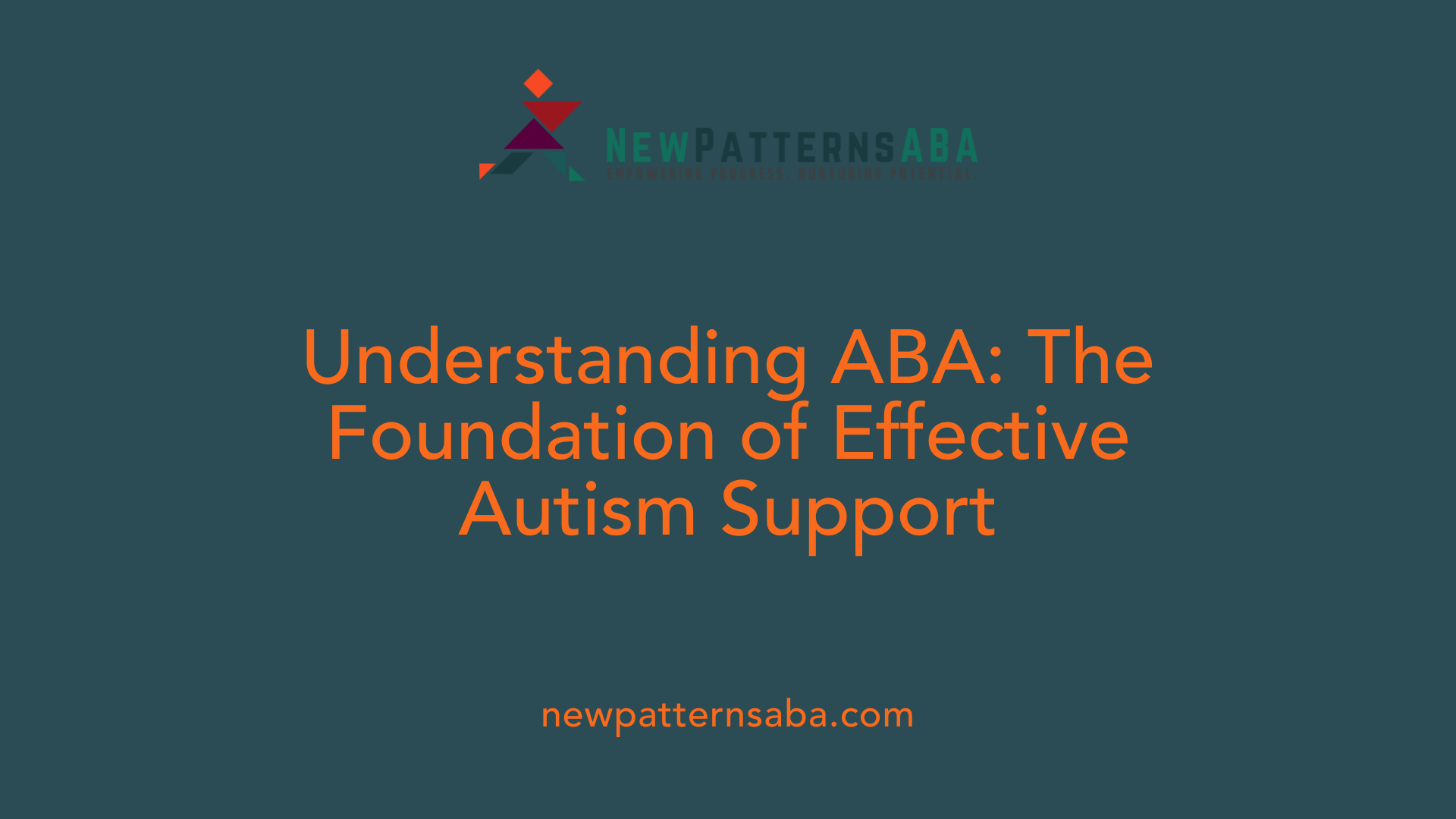
What is behavioral analysis therapy and how does it help individuals with autism?
Behavioral analysis therapy, especially Applied Behavior Analysis (ABA), is a scientifically validated approach designed to support individuals with autism by improving their social, communication, and adaptive skills. It uses the principles of learning and behavior reinforcement to encourage positive behaviors while reducing challenges that may hinder everyday functioning.
The core of ABA involves assessing each individual's unique needs and developing tailored goals that target essential skills. Techniques used include positive reinforcement, where desirable behaviors are rewarded to encourage repetition, and breaking down complex skills into simpler, manageable steps. This methodical, personalized approach helps autistic individuals gain greater independence and enhances their ability to engage effectively within their communities.
Role in improving social, communication, and adaptive skills
ABA is particularly valuable in fostering social competencies such as eye contact, turn-taking, imitation, and joint attention. Through structured and repetitive exercises, individuals learn how to interpret social cues, initiate and maintain interactions, and effectively communicate both verbally and non-verbally. This therapy also focuses on adaptive skills, which involve practical, everyday functions like self-care, following routines, and responding to environmental changes.
Intensive and individualized nature
The therapy is typically intensive, often involving multiple sessions weekly over prolonged periods. This consistency allows for gradual improvements and helps maintain the learned behaviors. By customizing interventions to match the developmental level and preferences of each person, ABA ensures that strategies are meaningful and engaging, enhancing motivation and learning efficiency.
Collaboration among professionals and families
Successful behavioral analysis therapy depends on collaboration between trained therapists, families, educators, and other caregivers. Family involvement is crucial for generalizing skills outside therapy sessions and reinforcing positive behaviors in natural environments. This team-based approach ensures that goals are realistic, culturally appropriate, and aligned with the individual’s broader development.
| Aspect | Description | Importance in Therapy |
|---|---|---|
| Personalized Goal Setting | Tailoring objectives based on individual strengths and challenges | Ensures interventions meet specific needs |
| Reinforcement Techniques | Using rewards to increase desirable behaviors | Motivates learning and maintains progress |
| Skill Breakdown | Dividing complex skills into small, teachable units | Simplifies learning, making skills achievable |
| Intensive Intervention | Frequent and consistent therapy sessions | Promotes retention and generalization of skills |
| Family and Caregiver Involvement | Engaging those closest to the individual for support and monitoring | Maximizes real-life application and consistency |
Behavioral analysis therapy serves as a foundational approach in autism education, offering structured yet adaptable methods to support meaningful growth in social and communication arenas.
Professionals Delivering Behavioral Analysis Therapy in Autism Education
Who typically provides behavioral analysis therapy for individuals with autism?
Behavioral analysis therapy for individuals with autism is primarily delivered by professionals trained in applied behavior analysis (ABA). Most notably, Board Certified Behavior Analysts (BCBAs) take the lead in designing, overseeing, and customizing treatment plans to meet each child's unique needs. These experts bring advanced certification and specialized knowledge to ensure therapy is both effective and individualized.
Supporting the BCBAs are Registered Behavior Technicians (RBTs) or therapists who implement these treatment strategies in direct sessions with the children. These support staff members work under the supervision and guidance of BCBAs to maintain consistency and fidelity to the treatment protocols.
Settings of therapy delivery
Behavioral analysis therapy is flexible in terms of where it can be provided. Therapy sessions may take place in the child's home, clinical settings, schools, or community environments. The choice of setting often depends on factors such as the child’s specific requirements, family preferences, and logistical considerations. Delivering therapy in naturalistic environments like home or community spaces can promote generalization of skills across multiple settings.
Importance of evidence-based practice and caregiver involvement
One of the foundational aspects of behavioral therapy is its strong emphasis on evidence-based techniques. Professionals delivering ABA treatment rely on scientifically validated methods proven to support social, behavioral, and communication skills in children with autism.
Equally critical is the involvement of caregivers. Positive outcomes are more likely when caregivers are actively engaged in therapy—learning techniques, providing reinforcement, and supporting consistency beyond sessions. BCBAs and therapists strive to create a collaborative partnership with families to foster a positive and safe learning environment that extends into daily life.
This combination of qualified professionals, adaptable therapy settings, evidence-driven methods, and caregiver collaboration forms the cornerstone of successful behavioral analysis therapy in autism education.
Components of Effective Behavioral Analysis Therapy Programs
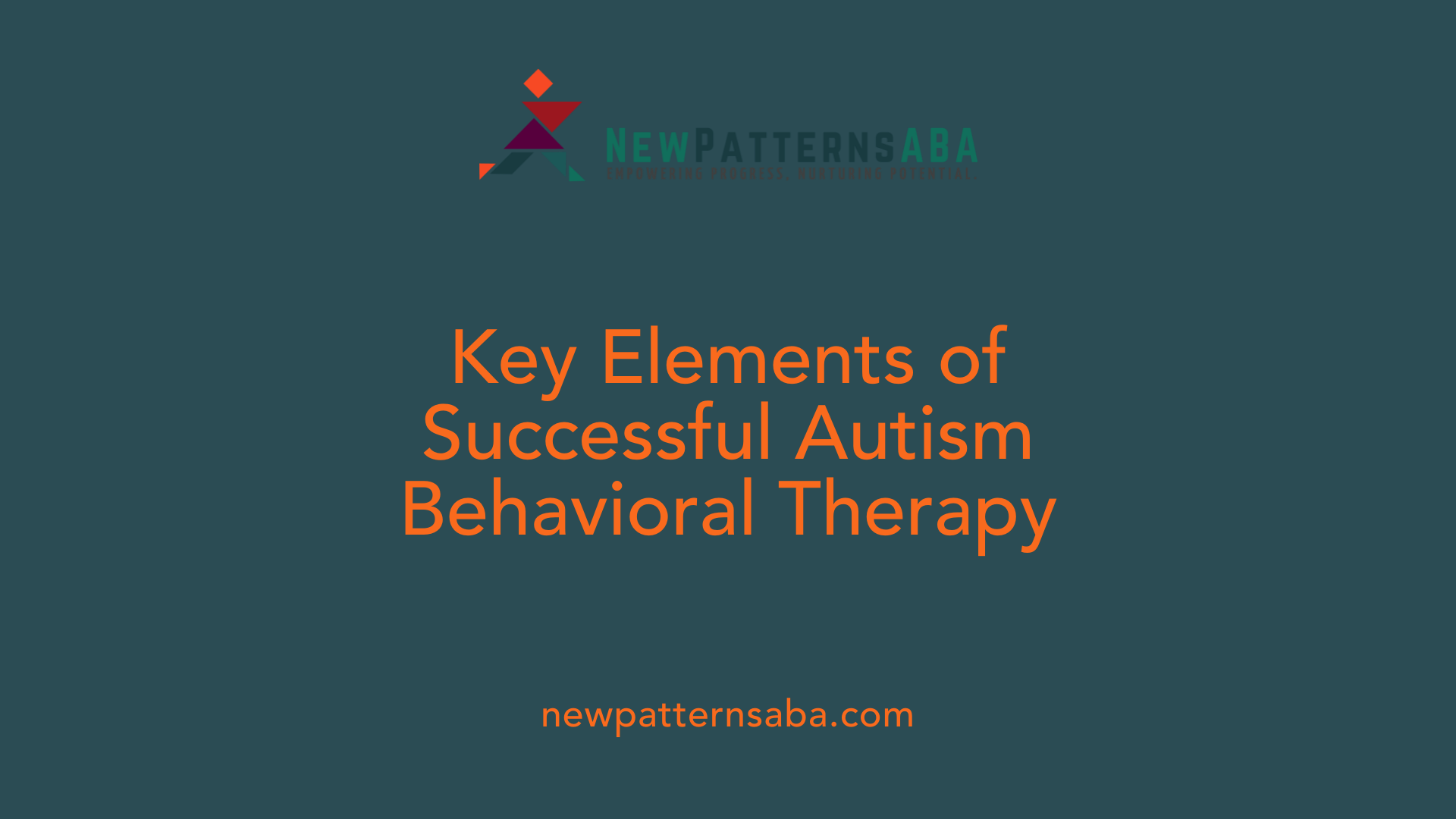
What are the key components of a behavioral analysis therapy program?
Behavioral analysis therapy programs for Autism Spectrum Disorder (ASD) are structured and evidence-based approaches focused on improving functional behaviors and enhancing social competencies. They begin with a thorough assessment, typically including a Functional Behavior Assessment (FBA). This process identifies the triggers and purposes of specific behaviors to tailor individualized treatment goals.
The therapy incorporates a variety of techniques such as:
- Positive reinforcement to encourage desired behaviors.
- Prompting and fading to guide skill acquisition and gradually reduce assistance.
- Task analysis and chaining to break complex skills into smaller, teachable steps.
- Modeling where therapists demonstrate appropriate behaviors.
- Natural environment training to generalize learned behaviors to real-life settings.
An integral aspect of behavioral analysis therapy is data collection and progress monitoring. Therapists systematically record behavioral responses and skill acquisition through direct observation and standardized measures. This ongoing evaluation enables them to adjust interventions dynamically, ensuring maximum effectiveness and responsiveness to the individual's needs.
Equally vital is the involvement of family members and caregivers. Their participation ensures that skills learned during therapy are practiced and reinforced beyond clinical settings, promoting generalization and maintenance of improvements. Individualized goal setting, developed collaboratively with input from healthcare professionals and families, ensures the therapy targets meaningful areas such as communication, social interaction, self-care, academic skills, and autonomy.
Qualified professionals, often Board Certified Behavior Analysts (BCBAs), oversee these programs to ensure interventions are both ethical and empirically supported. The combination of personalized assessment, structured yet flexible techniques, rigorous monitoring, and holistic family engagement constitutes the foundation of effective behavioral analysis therapy programs for children with ASD.
Measuring Progress in Behavioral Analysis Therapy for Autism
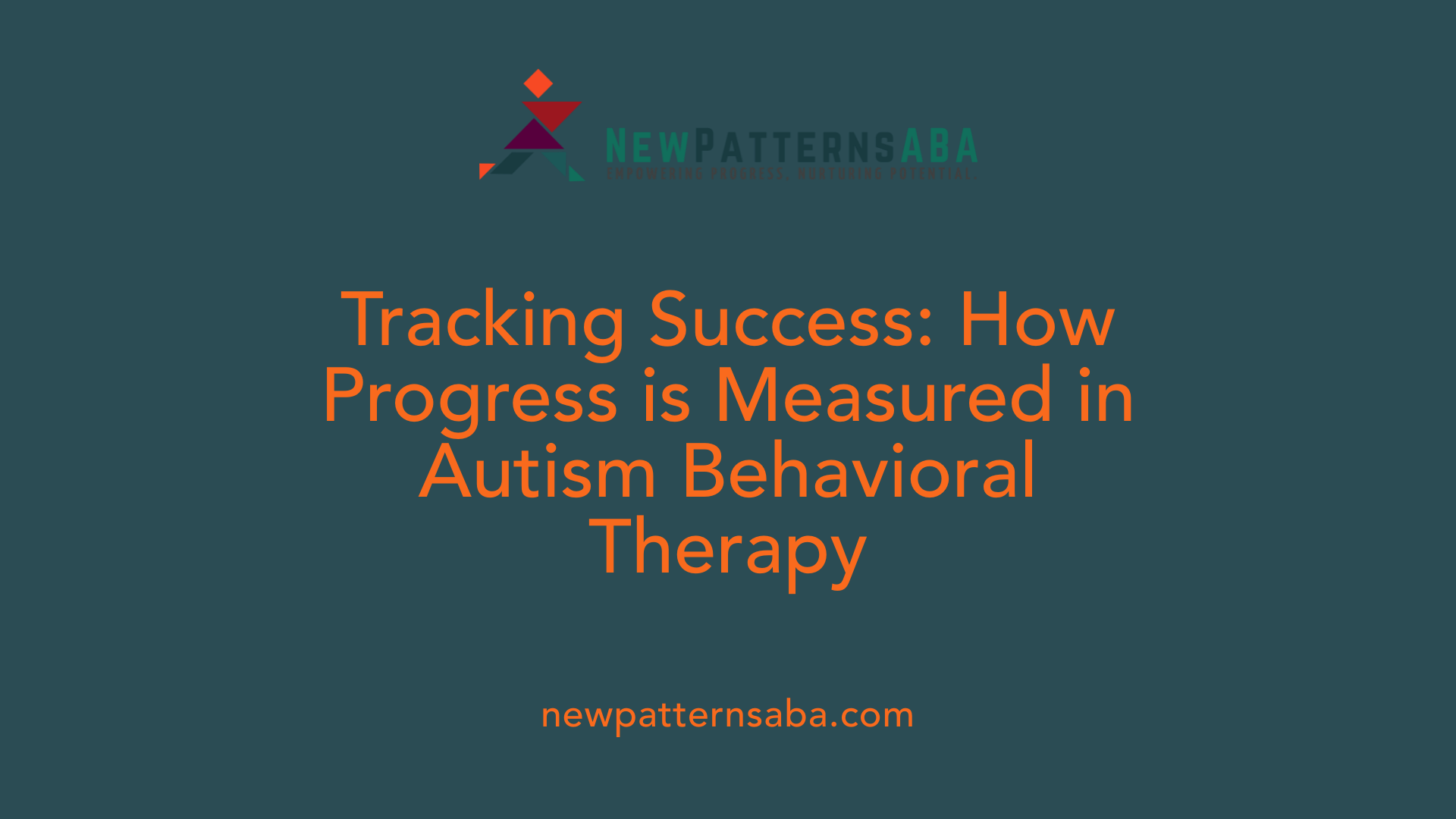
How is progress measured in behavioral analysis therapy for autism?
Progress in behavioral analysis therapy for autism spectrum disorder (ASD) is assessed using rigorous, systematic, and data-driven approaches. These methods provide therapists and caregivers with detailed insights into how a child’s behaviors and skills evolve throughout the intervention.
Systematic and Data-Driven Progress Tracking
Behavioral therapists employ systematic tracking by continuously recording or sampling specific behaviors. This often includes:
- Continuous Measurement: Documenting every occurrence of a target behavior. For example, every time a child initiates social interaction or uses language.
- Discontinuous Sampling: Observing behaviors at predetermined intervals, such as every 5 minutes, to estimate behavior frequency and duration.
This dual approach allows for precise monitoring of progress and helps capture both frequent and less common behaviors.
Observable Improvements in Language, Social Interaction, and Independence
Therapists look for concrete, observable changes that show improvement, such as:
- Language Use: Increased verbal requests, vocabulary acquisition, and more spontaneous communication.
- Social Interaction: Enhanced initiation and maintenance of social exchanges, better eye contact, turn-taking skills, and use of non-verbal cues like gaze and pointing.
- Independence: Greater ability to perform daily tasks or follow instructions without prompts.
- Emotional Regulation: Improved responses to social situations and reduced frustration or anxiety.
For example, studies have shown that interventions supported by assistive tools like robots can boost initiation of behavioral requests and improve joint attention, which are crucial for social functioning.
Guiding Therapy Adjustments Based on Data
Collected data enables therapists to evaluate which techniques are most effective and when to modify therapy plans. If progress plateaus or specific challenges arise, the therapy can be tailored to focus on those areas, enhancing overall outcomes.
Continuous data collection also supports early identification of emerging skills or persistent difficulties, facilitating timely interventions.
| Measurement Method | Description | Purpose |
|---|---|---|
| Continuous Recording | Tracking every occurrence of target behavior | Detailed frequency and context understanding |
| Discontinuous Sampling | Observing behavior at set intervals | Efficient monitoring of behaviors over time |
| Behavioral Observations | Qualitative notes on social skills and interactions | Understanding nuances in communication and emotions |
| Standardized Questionnaires | Structured assessments completed by caregivers or teachers | Measuring broader developmental progress |
By combining quantitative and qualitative data, behavioral analysis therapy effectively monitors progress, ensuring interventions are responsive to each child's evolving needs.
Dispelling Common Misconceptions About Behavioral Analysis Therapy

What Are Some Common Misconceptions About Behavioral Analysis Therapy for Autism?
A prevalent misunderstanding is that behavioral analysis therapy, often referred to as Applied Behavior Analysis (ABA), is rigid and punitive. Contrary to this belief, ABA is a highly personalized intervention that emphasizes positive reinforcement and naturalistic teaching approaches. It involves active family participation and adapts to the individual's needs, making it a collaborative and flexible therapy.
There is also a notion that ABA focuses solely on altering behaviors without addressing communication or social skills. In reality, comprehensive ABA programs cover a broad spectrum of developmental domains, including social interaction, communication, emotional regulation, and daily living skills. These multifaceted programs employ evidence-based techniques such as modeling, prompting, and reinforcement to teach functional behaviors in natural settings.
Another common misconception is that ABA seeks to "cure" autism. However, the primary goal of behavioral analysis therapy is to enhance the quality of life, promote independence, and support neurodiversity rather than eliminate the diagnosis. It aims to empower individuals by building on their strengths and addressing challenges respectfully.
ABA is also often misunderstood as a one-size-fits-all approach. In fact, it is highly individualized, tailored according to each person's unique profile, and frequently implemented alongside multidisciplinary support teams. This integrative strategy ensures that interventions align with the child's developmental stage, family preferences, and cultural background.
In summary, ABA therapy is an adaptable, research-backed method designed to improve social, communicative, and daily living competencies in individuals with autism. It respects neurodiversity and prioritizes enhancing life skills through empathy, collaboration, and evidence-based practices.
Conclusion: The Future of Autism Education with Assistive Robotics
Assistive robotics is proving to be a valuable complement to established behavioral analysis therapies in autism education. From accessible toy robots boosting fundamental non-verbal skills through play, to advanced humanoid robots facilitating engagement, autonomy, and diagnostic support, these technologies expand the toolkit available to educators and therapists. While challenges like interaction adaptability and cultural responsiveness remain, ongoing research guided by inclusive design principles promises to refine robot behaviors for better outcomes. Ultimately, integrating assistive robotics offers the potential to enhance learning, social participation, and independence for children with autism, marking an exciting frontier in specialized education and therapy.
References
- Efficacy of robot-assistive training for children with autism ...
- Navigating Assistive Robotics for Autism. Assessing ...
- Socially Assistive Robotic Instruction for Children With ...
- Towards Robot-Assisted Therapy for Children With Autism ...
- How to Measure ABA Progress: A Guide for Ohio Families
- Applied Behavior Analysis (ABA)
- Behavioral Treatment of Autism and Other Developmental ...
- How to Choose a Provider for Applied Behavior Analysis ...
- 10 Common Misconceptions About ABA
- Myths & Facts About Applied Behavior Analysis

